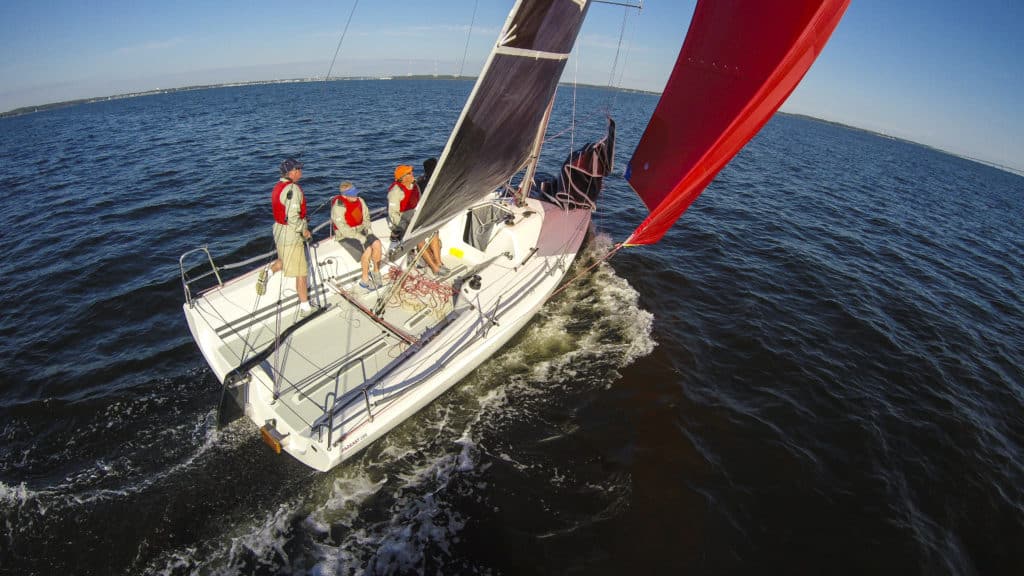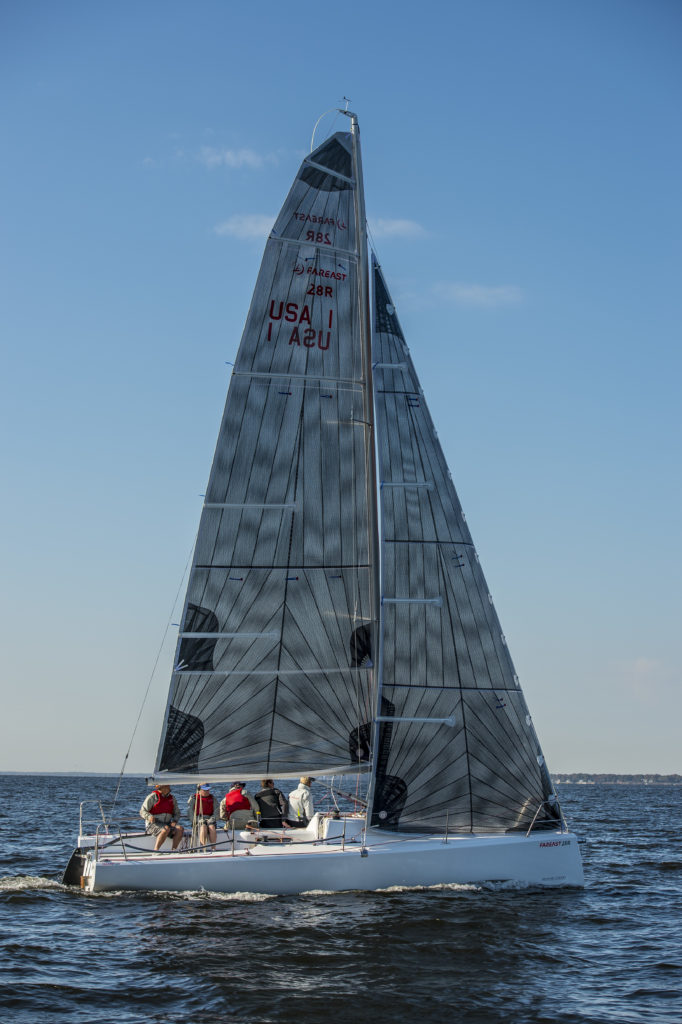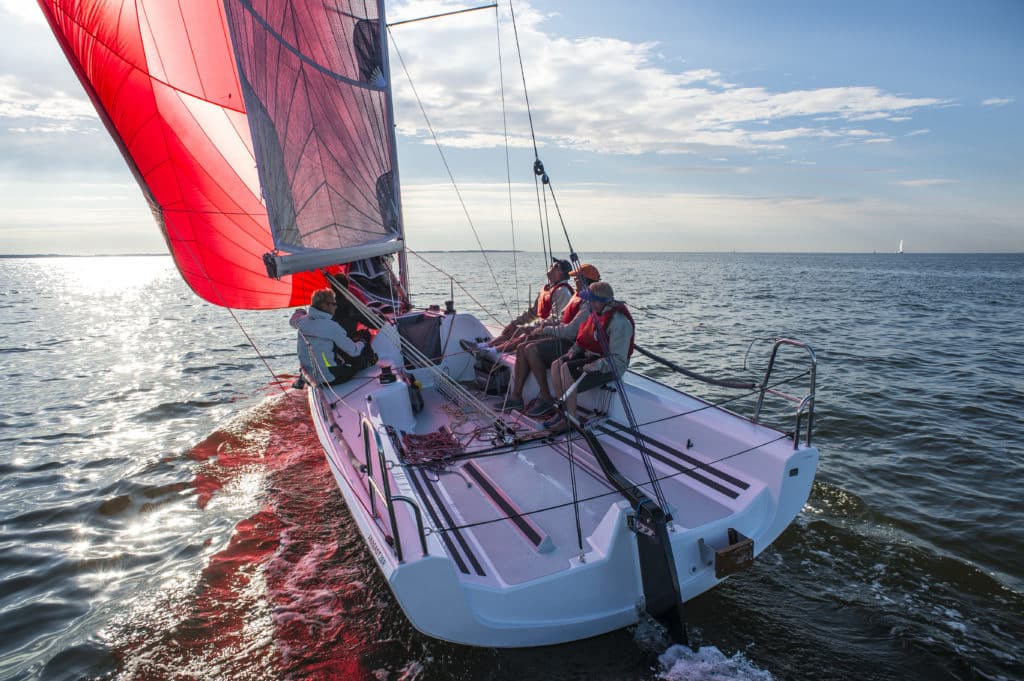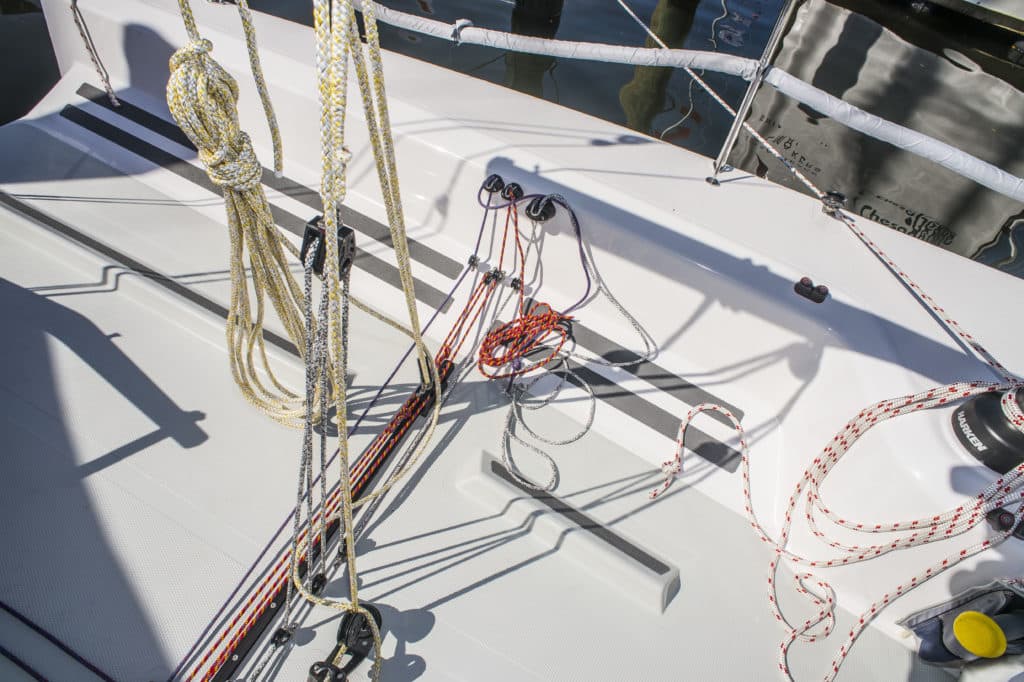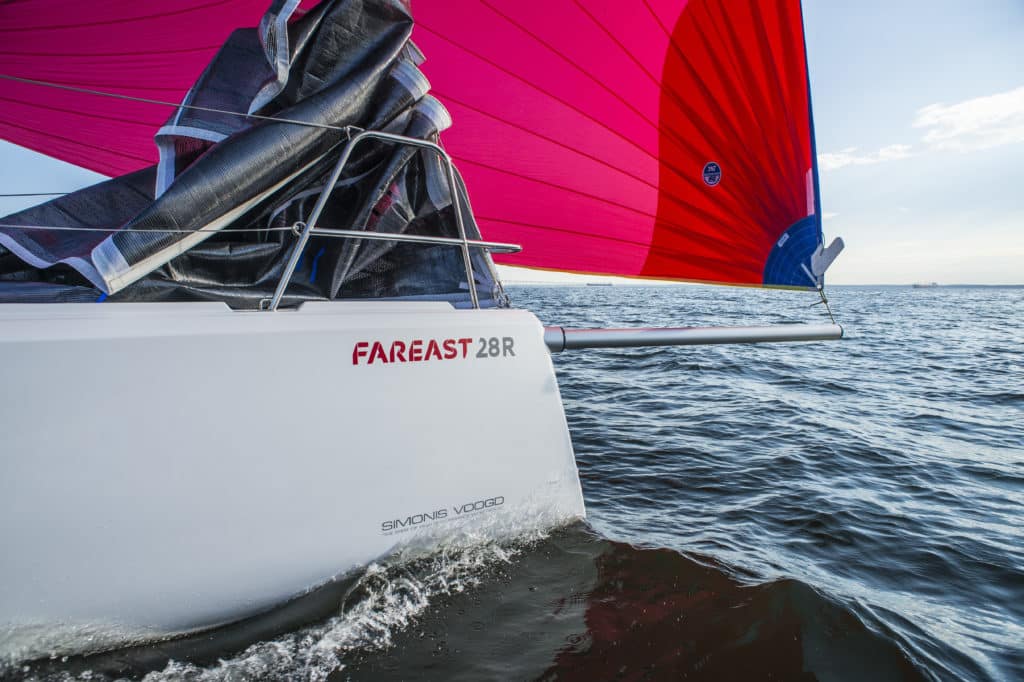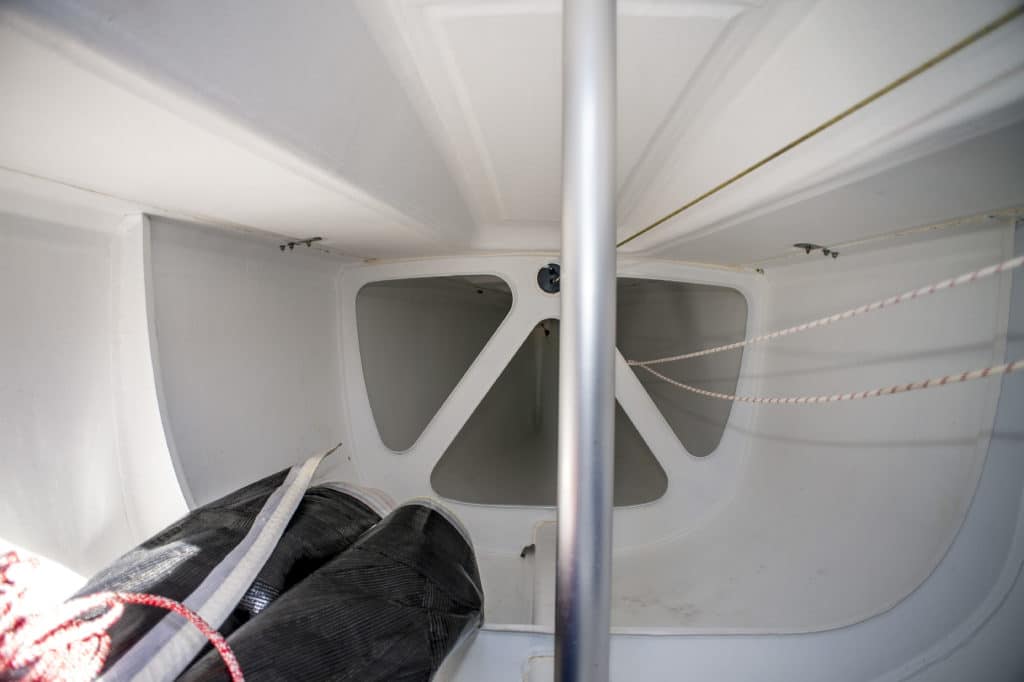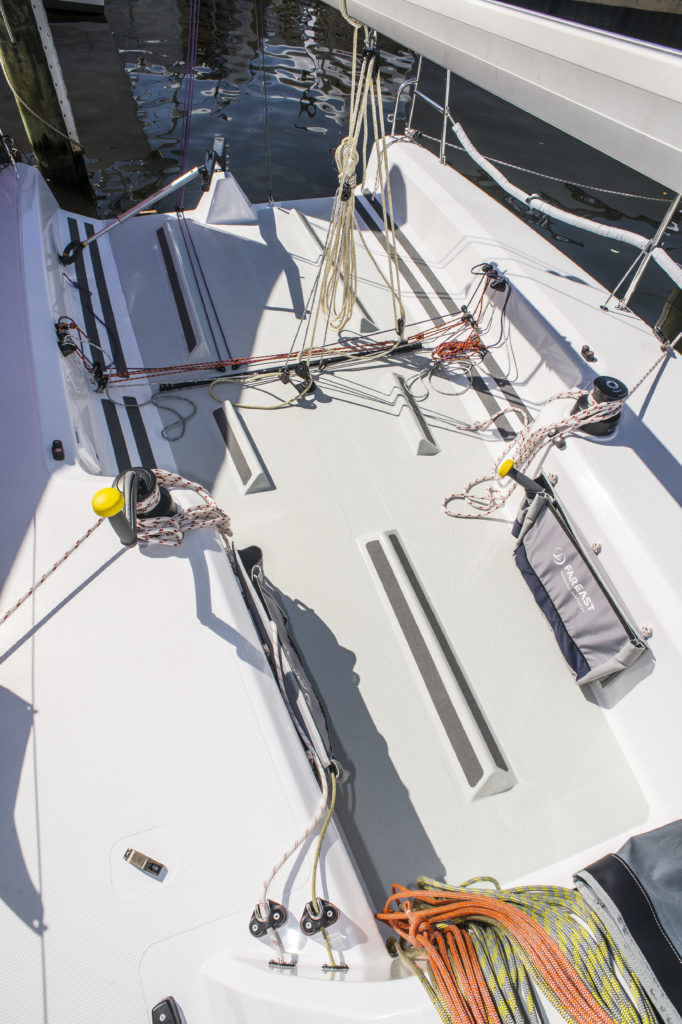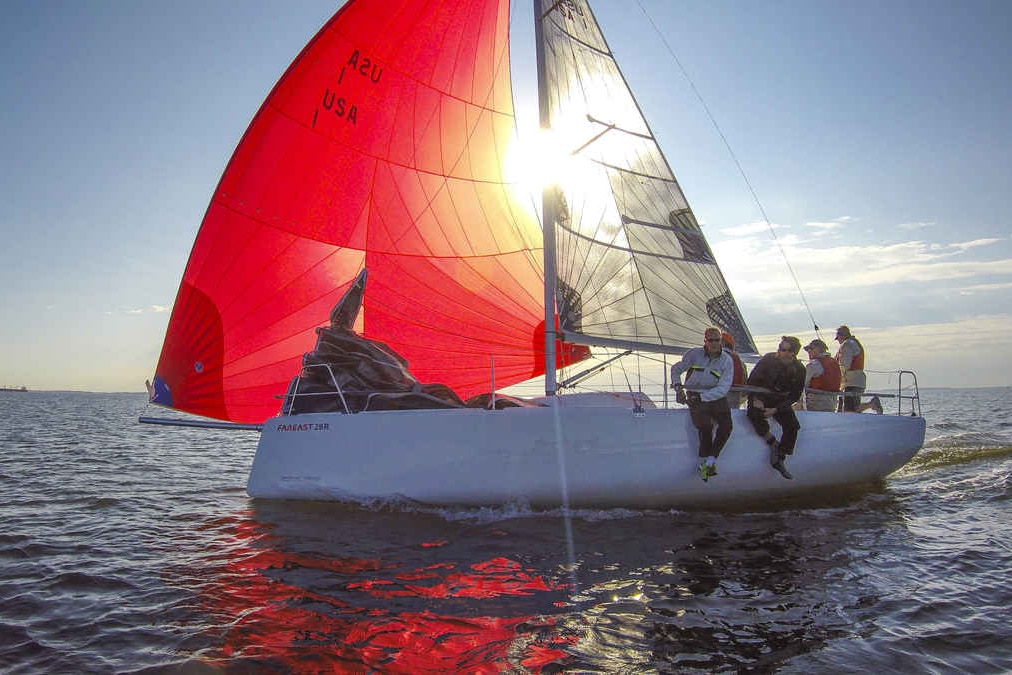Boat of the Year Overall Winner: Fareast 28R
It’s easy to be enamored with the slickest car on the lot, or for sailors, with the most technical-looking boat at the show, the one with a string of zeros on the price tag, carbon detailing and high-tech deck ornaments. But high cost and high-tech serve a select few. It’s just as easy to walk right past the one boat that’s right for many. For our Boat of the Year judges, tasked with culling the best of the new models at the U.S. Sailboat Show in Annapolis, the one that can satisfy the most sailors is the Fareast 28R.
At first glance, there’s nothing unique about the 28R. It’s a white fiberglass 28-foot sportboat with a centerline sprit, aluminum rig and textbook cockpit layout. There is nothing radically new here, with one notable exception — the price tag. For $60,000, you have a regatta-ready rocket with a trailer. For comparable boats its size, the judges said, that’s a steal.
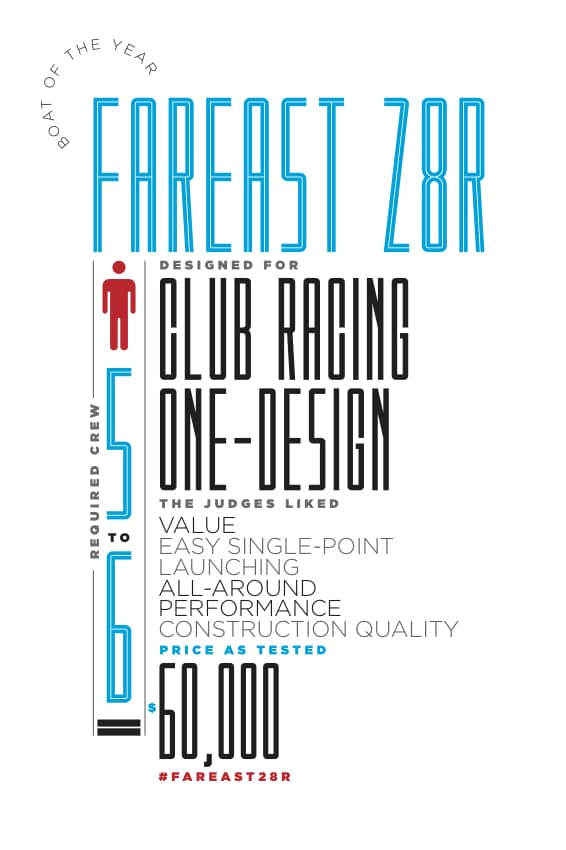
“Every year we talk about bang for your buck, and this time we have one that really delivers on that,” said longtime BOTY judge Chuck Allen. “It sails awesome, it’s really simple, and for someone looking for a new boat for club racing, it’s perfect. It’s a lot of boat for what they’re asking.”
Built in China by Fareast Trading LLC and imported by Sturgis Boat Works, of Massachusetts, the 28R is not exactly new. There are more than 100 sailing in Europe and China, and the class has pending ISAF one-design status. It’s new to North America, however.
The 28R’s vinylester-infused laminate is “pretty basic,” said judge Tom Rich, a career boatbuilder who was impressed with the build quality. “With six bulkheads that fit well and the A-frame foredeck truss, there’s plenty of structure in the boat,” he said. “It’s similar to what we’ve seen in most production builds like this over the years, but the simplicity of the whole thing is what I like. It doesn’t pretend to be anything but a simple, bang-around-the cans racer.”
Sturgis’ Matt Wake raced the 28R in New England (PHRF 51) throughout the summer, with good results. The one-design sail package includes main, jib and spinnaker, but for anyone with point-to-point intentions, Wake suggests adding a reaching headsail to the inventory. Spinnakers are companionway-launched because there’s no foredeck hatch, which Wake said is beneficial, based on his big-breeze experiences with the boat. “Having an open hatch is asking for a lot of water inside,” he said, “especially given the amount of water we’ve seen thrown up by the boat’s reverse bow.”
Yet the simple appeal of the boat at the dock wasn’t what sold the judges on its potential as Boat of the Year; it was how well it sailed. In 10 to 15 knots and flat water, they reported excellent stability and great balance, as well as a sharp, responsive bite from the high-aspect rudder. The boat is powered up, so for pickup weeknight crews and all-amateur programs, it’ll deliver off-wind frills, said Allen. Five to six crew will get it around the track with one smaller crew responsible for caddying the spinnaker to and from the companionway bag.
After sailing, the judges commented that the 28R had a big-boat feel, but small-boat handling in the maneuvers. “Everything on the boat works easily,” said Allen. “It’s very sensitive to crew weight, and it will require crews to hike extra hard.”
The wave-piercing bow sheds water, and there’s a nice, long waterline, said Greg Stewart, our naval architect of the judging trio. “The back end of the boat is nicely shaped, the chine height is right, and there’s fullness forward so it doesn’t trip over itself. The reason it’s so weight-sensitive is because, at only 2,800 pounds, there’s nothing extra in it. It’s light and likes being heeled a bit.”
Exciting sailing with a bare-bones, trailerable 28-footer — at a price that’s more than right for club racers — is what ultimately brought the judges to the Fareast 28R as the overall Boat of the Year. No, it doesn’t foil or break new ground, but as Stewart put it, it best delivered on its design purpose. “Because of its price, performance and simplicity, it’s a boat that you can have a lot of fun with without much effort. It brings sportboat sailing back to the basics.”
